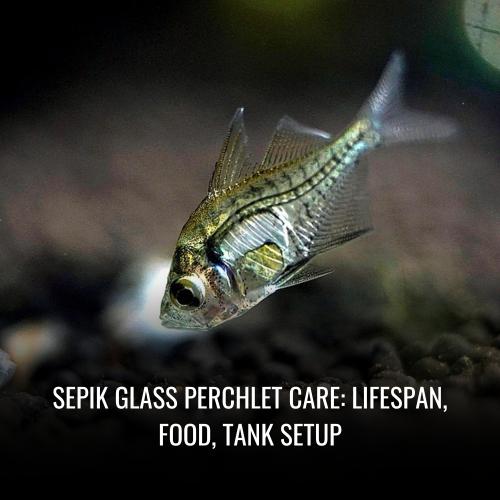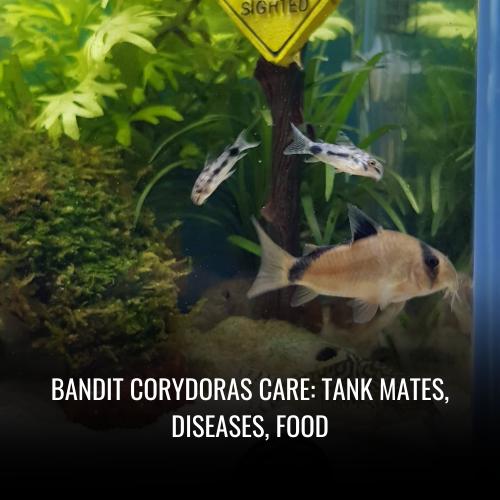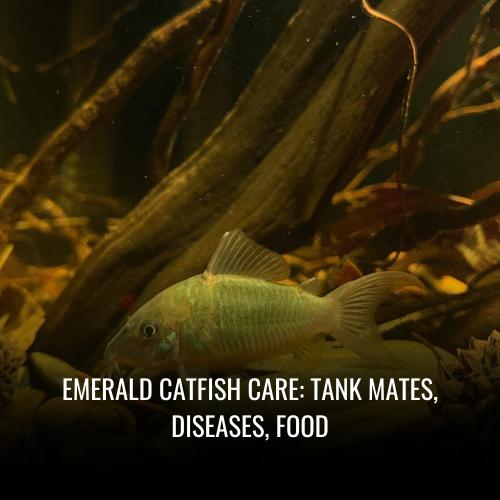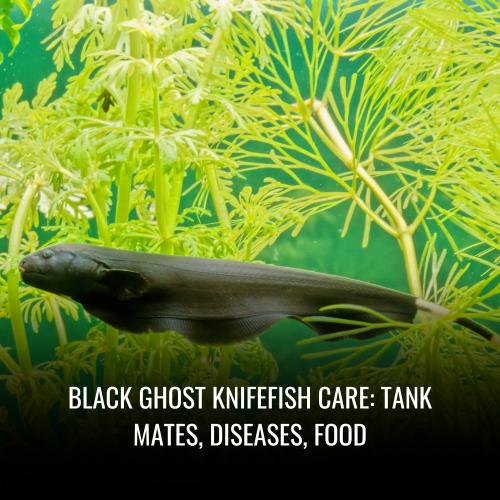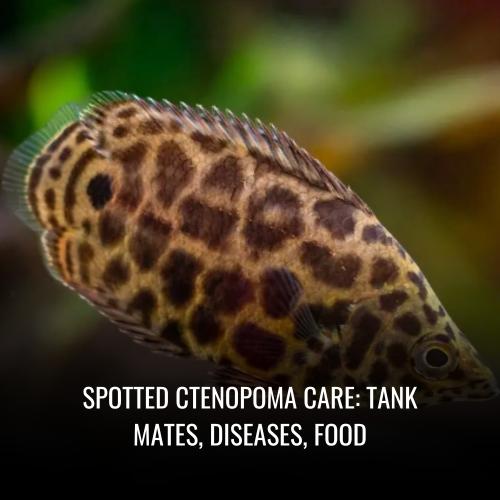Jordans catfish Care: Diseases, Tank Setup, Food & More
This post contains affiliate links. As an Amazon Associate, we earn from qualifying purchases.
Jordans catfish, native to Central America, is a unique species intriguing to many aquarists. This fish demands a specific water environment to thrive, with a recommended pH range of 6.8-8 and a temperature spanning 24-27°C. Known for its considerable size in captivity, it often reaches 30-35 cm, requiring a spacious tank to accommodate its growth. Aquarists should be cautious of its aggressive nature, as Jordans catfish can exhibit territorial behavior both towards its kind and other tank mates.
| Characteristic | Detail |
|---|---|
| Scientific Name | (Provide scientific name) |
| Common Name | Jordans Catfish |
| Family | (Provide family name) |
| Usual Size in Tanks | 30-35 cm |
| Recommended pH Range | 6.8 – 8 |
| Recommended Water Hardness | (Provide range in dGH) |
| Recommended Temperature | 24 – 27 °C |
| Reproduction | (Provide details) |
| Origin | Central America |
| Temperament to Own Species | Aggressive |
| Temperament to Other Fish | Aggressive |
| Usual Place in Tank | (Provide information) |
| Lifespan | (Provide lifespan details) |
| Tank Size Requirement | (Specify minimum tank size) |
| Filtration System | (Provide recommendation) |
| Sexual Dimorphism | (Provide details) |
| Substrate Cleaning | (Does it clean the substrate? Yes/No) |
When introducing Jordans catfish to your aquarium, prioritize providing a conducive environment for their well-being. Short and succinct, this profile acts as a quick guide for aquarists to understand the essentials of caring for this compelling species.
Scientific Name
The scientific classification of Jordans Catfish, renowned among fish enthusiasts, establishes it as the sole representative of the genus Pylodictis in the family Ictaluridae. Its full scientific designation, Pylodictis olivaris, offers a glimpse into the catfish’s preferred habitat and appearance. Originating from the root words “pylo” (mud) and “dictis” (net), the genus name Pylodictis cleverly signifies the fish’s affinity for the silty, muddy bottoms of water bodies. Meanwhile, “olivaris”, stemming from the Latin “oliva” meaning olive, aptly describes the olive hue of the catfish’s dorsal surface.
| Scientific Classification | Detail |
|---|---|
| Kingdom | Animalia |
| Phylum | Chordata |
| Class | Actinopterygii |
| Order | Siluriformes |
| Family | Ictaluridae |
| Genus | Pylodictis |
| Species | P. olivaris |
| Common Name | Flathead Catfish |
In concise terms, Pylodictis olivaris, or Jordans Catfish, garners acclaim within the aquatic community not only for its singular status but for its mud-netting behavior and the beautiful olive backs that reveal its riverside roots.
Average Size
Jordans Catfish demonstrates a notable difference in size when comparing their captive conditions to their natural habitats. Enthusiasts who keep these fish in aquariums will observe them growing to an average length of 3-5 inches when fully mature. Conversely, in the wild, Jordans Catfish can flourish, reaching a much larger size of 12-18 inches.
| Location | Average Adult Size |
|---|---|
| Captivity | 3-5 inches |
| Natural Habitat | 12-18 inches |
These catfish begin their journey as tiny juveniles, typically measuring between 1-2 inches when initially introduced to an aquarium setting. Given proper care, a rich diet, and an optimally maintained fish tank, they can reach adulthood within 2-3 years. During this crucial growing phase, they embody swift growth.
Quick Summary:
- In captivity: 3-5 inches
- In the wild: 12-18 inches
- Initial juvenile size: 1-2 inches
- Time to mature size: 2-3 years
- Males are larger, especially in breeding season
Lifespan
With a potential to grace aquariums for over 15 years, Jordans Catfish are a testament to longevity in captive conditions. This lengthy lifespan is credited to an owner’s commitment to providing proper care. Factors like optimal water parameters and a balanced diet are pivotal to their well-being and, thus, their extended years.
| Key to Longevity | Importance |
|---|---|
| Suitable Water Parameters | Ensures ideal living conditions |
| Balanced Diet | Provides necessary nutrition |
| Regular Maintenance | Keeps the environment healthy |
| Stress-Free Surroundings | Prevents health issues and promotes growth |
Aquarists must note that Jordans Catfish embody a dedication stretching beyond a decade. To honor this commitment, one must create a nurturing abode. A stress-free environment coupled with ample space enhances their quality of life. Moreover, good water quality is non-negotiable. Aligning with their need for a pristine habitat, responsible owners conduct regular water changes and sustain a menu that mimics their natural preferences, thus paving the way for these captivating catfish to thrive.
Quick List for Long-Term Health:
- Maintain suitable water conditions
- Offer a variety of nutritional food
- Ensure a spacious, peaceful tank
- Perform consistent aquarium upkeep
Caring for Jordans Catfish is indeed a long-term relationship, where diligence and affection yield a rewarding aquatic companionship.
Natural Habitat
Jordans Catfish, a species native to North America, flourishes in tranquil aquatic environments. Optimal habitats include slow-moving rivers, creeks, and ponds, all sharing common features: muddy or sandy bottoms veiled with abundant submerged vegetation. These diverse ecosystems not only provide sustenance but also crucial cover in the form of fallen logs and other natural debris, essential for these catfish to evade predators.
| Preferred Conditions | Details |
|---|---|
| Bottom Characteristics | Muddy or sandy |
| Cover | Submerged vegetation, logs |
| Water Flow | Slow-moving |
| Water Temperature | Optimal range: 70-75°F |
| pH | Slightly acidic to neutral |
Adaptability is a hallmark trait of Jordans Catfish, allowing them to extend their presence into man-made water bodies such as reservoirs and lakes. They tend to congregate in the calmer, deeper pools of their environment, where they continue their role as scavengers.
Quick Habitat Highlights:
- Seek shallow areas for safety and food
- Adapt to both natural and artificial water bodies
- Prefer warmer waters with a gentle flow
Their affinity for stable, well-structured habitats, characterized by the right temperature and pH balance, exemplifies the Jordans Catfish’s adaptability and resilience in the face of changing landscapes.
Appearance
With their body artfully painted in a mottled tapestry of browns and grays, Jordans Catfish glide through their murky aquatic realms as masters of disguise. Their elongated, slender figures taper to a flat head, where the prominent feature of slightly downturned mouths hints at their bottom-dwelling habits. It’s the dance of dark spots and blotches across their skin that cloaks them perfectly against the muddy terrain beneath.
| Distinctive Features | Visual Attributes |
|---|---|
| Body Shape | Elongated and slender with flat head |
| Coloration | Mottled brown/gray with dark spots |
| Barbels | Long, sensory organs aiding in food detection |
| Fins | Dorsal and pectoral with black and white stripes |
| Eyes | Small, positioned high on head |
A closer look reveals the fine details that set these creatures apart—the barbels, resembling whimsical whiskers, extend around their mouths, flourishing as sensory tools to navigate and feed in silty waters. Accents of black and white stripes adorn their fins, a stark contrast that adds to the allure. Their eyes, though modest in size, take the high ground on their heads, ever-watchful and ever-vigilant.
Discovery Checklist:
- Note the barbels for sensory perception
- Spot the unique dorsal and pectoral fin patterns
- Observe their high-set eyes while in hiding
Every feature of the Jordans Catfish is a testament to their evolutionary expertise, ensuring they thrive unseen and undisturbed.
Behavior & Temperament
Jordans catfish, known for their intriguing appearance, also showcase distinctive behaviors and temperaments within an aquatic setting. These fish, while peaceful among a varied community of tank inhabitants, can exhibit complex interactions that range from nocturnal activity to territorial stances. Understanding these behaviors is key to creating a harmonious environment that caters to their unique lifestyle.
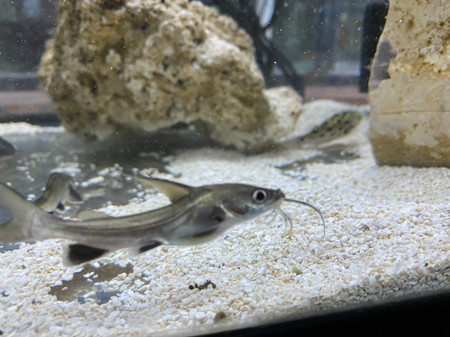
Are Jordans Catfish Fin Nippers?
Remarkably, Jordans Catfish, much to the relief of fellow aquarists, are not known to partake in fin-nipping antics. Their peaceful disposition keeps the fins of their tank mates safe, sparing them from the unwelcome aggression fin nipping entails. These bottom dwellers are more inclined toward scouring the substrate than they are in pursuing the trailing fins of other aquatic companions.
Are Jordans Catfish Aggressive To Each Other & Other Fish?
In the tapestry of Jordans catfish behavior lies a thread of territorial aggression, particularly notable among their own kind. With origins tracing back to Central America, these imposing creatures are wired by nature to demarcate and defend their claim within the mid-water realms of the tank. Though they are not antagonistic without provocation, enough space and hiding spots are necessary to mitigate skirmishes in a shared habitat, effectively ensuring a siege of dominance doesn’t disrupt the tank’s tranquility.
Are Jordans Catfish Friendly To Each Other & Other Fish?
While Jordans catfish can coexist with a variety of other species, their penchant for sovereignty can impact their amiability within the tank community. Ensuring a peaceful assembly requires careful selection of companions and a mindful eye on territorial cues. Tank setup and environmental enrichment play roles in fostering friendly interactions, allowing these formidable fish to show their more cordial side amongst both their kin and other aquatic denizens.
Are Jordans Catfish Schooling Fish?
Contrary to traditional schooling fish, Jordans catfish retain a more isolated stance in the wild. In captivity, they exhibit loose social structures rather than the cohesive, synchronized swimming of a school. Nonetheless, the catfish can develop group dynamics in larger tanks; their interactions are dictated more by territory and hierarchy than by the affinity for collective navigation.
Can You Have Just One Jordans Catfish In The Tank?
For the aquarist aiming for a serene aquatic scene, housing a single Jordans catfish is a viable and often less complex option. Without the pressures of intra-species competition, a lone catfish can flourish, displaying its range of behaviors without the onset of territorial disputes. Their adaptability to solitude simplifies tank management while still rendering a creature content in its silent reign over the tank floor.
Do Jordans Catfish Need To Be In Groups?
Social by nature, Jordans catfish do exhibit a richer behavioral repertoire when in the company of conspecifics. Small group settings often encourage a sense of security and can diminish the stress that a solitary existence might impose. A quorum of these aquatic creatures can be a visual treat, bringing the bottom of the tank to life with their interactive displays. However, this necessitates a spacious enclosure to accommodate the group dynamics effectively without provoking aggression.
In summary, understanding and catering to the natural behaviors and temperaments of Jordans catfish is essential for their well-being. Whether opting for a solitary inhabitant or a grouping, a balanced and spacious environment is key to nurturing their peaceful and sometimes territorial nature.
Food & Diet
Jordans catfish are true omnivores with a broad palate that extends to a variety of food types. These adaptable creatures will gladly accept live, frozen, or dried treats, with a notable preference for the juiciness of live offerings. Their diet is rich in fats, which are crucial for their calorie intake, and proteins, essential for growth and vitality. Despite their carnivorous leanings, Jordans catfish also play a role in algae management in aquatic settings, as they’ll graze on algae-covered surfaces. Let’s delve into the specifics of their dietary habits.
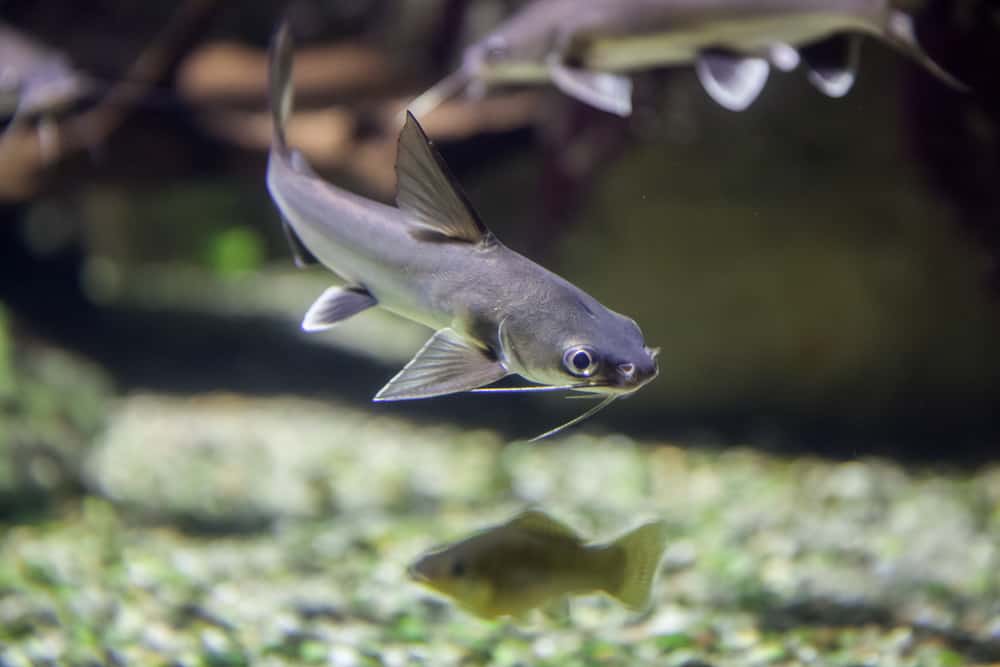
Do Jordans Catfish Eat Algae?
Yes, Jordans catfish incorporate algae in their diets and can be seen as natural algae control agents in their habitats. They often forage on surfaces coated with algae, scouring for these nutritious greens and, in turn, maintain a tidy aquatic environment. While algae provide essential micronutrients, these catfish should also have a comprehensive menu to fulfill their complex nutritional requirements. Algae-based sinking wafers or pellets can be an excellent addition to their regular feedings, ensuring they get their dose of plant-based nourishment.
Do Jordans Catfish Eat Shrimp?
Shrimp are a succulent treat for Jordans catfish and an integral aspect of their natural dietary regime. These protein-packed crustaceans furnish the catfish with amino acids vital for a robust constitution. To replicate their wild diet, aquarists can serve Jordans catfish whole or chopped shrimp as a nutritious enhancement, promoting their natural predatory instincts and ensuring a well-rounded food intake.
Do Jordans Catfish Eat Bloodworms?
Bloodworms are among the favored dietary selections for Jordans catfish due to their high protein content and appeal as a food source. Regular inclusion of bloodworms in their diet is a boon for their overall health, catering to their carnivorous needs. This type of feeding not only satisfies their appetite but also aids in simulating their instinctual hunting behaviors, vital for a mentally stimulating life within the confines of an aquarium.
Do Jordans Catfish Eat Mosquito Larvae?
Absolutely! Jordans catfish view mosquito larvae as both food and entertainment, attacking these wriggling prey with gusto. Feeding on mosquito larvae is not just gratifying for them but also beneficial from a nutritional standpoint, providing proteins essential for muscular development and maintenance. Moreover, by engaging with live mosquito larvae, the catfish exhibits a dynamic feeding behavior that contributes to their fitness and psychological wellness.
Do Jordans Catfish Eat Planaria?
Planaria, which are tiny flatworms, also fall prey to the dietary whims of Jordans catfish. Opportunistic by nature, Jordans catfish relish these creatures and often consume them when available, contributing to the diversity and balance of their intake. They can serve as a protein supplement within the confines of an aquarium, ensuring that the catfish’s diet remains as dynamic as it would be in the wild.
Do Jordans Catfish Eat Plants?
Though Jordans catfish have an affinity for the meatier side of the menu, they are not averse to consuming plant matter. They may nibble on tender aquatic plants or enjoy the occasional vegetable slice provided to them. Keeping an eye on their consumption patterns helps maintain a dietary equilibrium between proteins and vegetation, pivotal for their comprehensive health and longevity. Consulting with an aquatic veterinarian or a seasoned fish enthusiast can prove helpful in striking the right balance in the Jordans catfish’s diet.
In constructing a thriving habitat for Jordans catfish, it’s clear that variety is key. A diet that oscillates between animal-based and plant-based nutrition not only fosters physical health but also encourages a more vibrant and engaging environment for these fascinating bottom-dwellers.
Sexing: Male vs Female
Determining the gender of Jordans catfish can often be a complex task due to the subtle physical differences between the sexes. Unlike many other species, these catfish do not present obvious external characteristics to distinguish males from females. In instances where gender identification is essential, such as in breeding programs, careful observation of behavior or professional techniques may be employed.
Some aquarists report that mature males might develop a slightly wider head than their female counterparts; however, this trait is not consistently reliable for sexing purposes. During the spawning season, male Jordans catfish often become territorial and may exhibit unique courtship behaviors, which can serve as indicators of their gender.
More definitive methods like ventral probing are available but should only be conducted by skilled professionals to ensure the safety and well-being of the fish. Due to these challenges, many aquarium enthusiasts choose to maintain a group of Jordans catfish to increase the likelihood of natural pair formation and breeding.
| Characteristic | Male Jordans Catfish | Female Jordans Catfish |
|---|---|---|
| Head Shape | Slightly broader (variable) | Standard |
| Behavior (Spawning) | Territorial, courtship | Less distinctive |
Given the complexity, casual owners often prefer observing group dynamics to identify potential pairs.
Jordans catfish Tank Mates
When creating a community aquarium with Jordans catfish, it’s essential to select tank mates that are not only compatible, but can also thrive amidst the catfish’s assertive demeanor. Due to their territorial nature, Jordans catfish are best paired with similarly sized and robust species that can handle potential spats over space.
Here are some key points to consider for a harmonious tank:
- Choose larger, non-aggressive fish that occupy various aquarium levels.
- Opt for tank mates that require similar water parameters to promote a stress-free environment.
Ideal tank mates include:
- Large Cichlids – They’re sturdy and can match Jordans catfish in size.
- Larger Tetras – Fast and can dodge any aggressive advances.
- Barbs – Active fish that are less likely to be intimidated.
- Other Semi-aggressive or Aggressive Fish – Central American or comparable regions house species that can adapt to the Jordans catfish’s temperament.
Avoid small, passive species to prevent them from becoming unintended targets. With the right community setup, your aquascape will not only be visually appealing but will also provide a safe haven for all its inhabitants.
| Compatible Tank Mates | Why They’re Suitable |
|---|---|
| Large Cichlids | Sizeable and sturdy |
| Larger Tetras | Nimble and less targeted |
| Barbs | Active and can hold their own |
| Regional Aggressive Fish | Adapted to similar conditions and behaviors |
Aquarium Setup
Creating an optimal environment for Jordans catfish is essential for their health and happiness. A spacious tank, serene lighting, pristine water quality, and ample hiding places build the foundation of an ideal aquarium setup. When considering their robust size and vivacious swimming habits, these catfish require a larger home than most.
Ideal Tank Size
For a single Jordans catfish, a minimum tank size of 75 gallons is recommended to provide ample space for swimming and exploring. However, if you plan on keeping a community or a group of these catfish, you should aim for a tank size of 125 gallons or more, ensuring they have enough territory to share without conflict. The tank should emphasize horizontal space, as Jordans catfish are predominantly bottom dwellers. Remember to account for their potential growth, ensuring your tank selection will be a long-term fit.
| Number of Catfish | Recommended Tank Size |
|---|---|
| 1 Jordans Catfish | At least 75 gallons |
| Group of Jordans Catfish | 125 gallons or larger |
Beyond dimensions, the interior design of the tank should include various caves, driftwood, and other structures to offer essential retreats. These hiding spots help in appeasing the catfish’s desire for secure places to rest and also aid in reducing territorial disputes.
Ideal Water Parameters
For Jordans catfish, water quality cannot be taken lightly. They thrive in water temperatures ranging from 72 to 77°F (22 to 25°C), with a pH level between 6.5 and 7.5. The general hardness of water should be maintained from 5 to 12 dGH to match their natural environments. It is also crucial to keep ammonia and nitrite levels at zero, as these species are particularly sensitive to such toxins. Regular water tests and adjustments will ensure these parameters are always optimal.
| Parameter | Ideal Range |
|---|---|
| Temperature | 72-77°F (22-25°C) |
| pH Level | 6.5-7.5 |
| Water Hardness (dGH) | 5-12 |
| Ammonia/Nitrite Levels | 0 ppm |
Filtration
To maintain high water quality, robust filtration is indispensable for Jordans catfish. A combination of mechanical, biological, and chemical filtration forms an effective triad that keeps the water crystal clear and safe. Over-filtration is preferable as it helps in controlling waste and aids in achieving stability within the aquarium environment. It’s important to regularly service the filtration system to prevent the accumulation of detritus and toxic substances, which could harm the catfish. Additionally, good water circulation and adequate oxygen levels are facilitated by the right filtration setup, both of which are vital for Jordans catfish.
Lighting
Lighting plays a pivotal role in the life of Jordans catfish due to their nocturnal nature. A calm and subdued lighting arrangement is best, mimicking the low to moderate light conditions of their native habitats. Intense lighting should be avoided to prevent stress, which could lead to hiding and reduced activity.
Solutions such as LED strip lights with dimming capabilities grant the flexibility to adjust light levels and set up a consistent day-night cycle. A schedule of 10-12 hours of light and darkness is beneficial to sustain the natural circadian rhythm of Jordans catfish.
| Lighting Requirement | Recommendation |
|---|---|
| Light Intensity | Low to moderate, avoid harsh |
| Schedule | 10-12 hours of light and dark |
| Type of Lights | LED strip lights with dimming |
Setting up the right aquarium environment for Jordans catfish requires attention to detail and an understanding of their specific needs. By following the outlined recommendations, these captivating creatures will enjoy a habitat that is not only comfortable but also conducive to their well-being.
Common Possible Diseases & Prevention
Vigilance is key when caring for Jordans catfish, as they are prone to typical aquarium ailments like ich, fin rot, and fungal infections. These conditions, if left unchecked, can escalate quickly, undermining the health of your finned friends.
| Signs of Illness | Action |
|---|---|
| Loss of appetite, abnormal swimming | |
| Visible spots, ulcers or frayed fins | Check water parameters & |
| consult a vet |
An ounce of prevention is worth a pound of cure – ensure optimal water quality, perform regular water changes, and maintain an effective filtration system. Quarantine new arrivals to curb the spread of disease. Monitor your catfish for any behavioral or physical changes to spot trouble early.
To prevent undue stress and subsequent illness, avoid overstocking your aquarium. Stress weakens their immune system, making them more susceptible to disease. Here’s a succinct checklist to keep your Jordans catfish in good health:
- Regular water tests and changes
- Quarantine new fish
- Avoid tank overcrowding
- Watch for illness signs
By observing these preventive measures, you’ll foster a thriving environment, dodging the common health pitfalls that can affect Jordans catfish.
Breeding Jordans catfish In Aquarium
Breeding Jordans catfish in an aquarium setting poses unique challenges for aquatic enthusiasts due to their intricate natural breeding behaviors and environmental requirements. Typically, these fish aren’t bred in captivity often, as mimicking the precise conditions they need is a formidable task.
In their natural habitat, the breeding process for Jordans catfish is quite remarkable. The female lays around 100 eggs, resembling the size of small marbles. Once laid, the male takes on the role of the protector, keeping the eggs safe within his mouth, exemplifying dedicated parental care.
To attempt breeding Jordans catfish at home, aquarists must create an environment that simulates their natural breeding grounds. This involves adjusting water parameters meticulously and establishing structures conducive to egg placement and male guardianship.
Breeding Jordans Catfish: Key Considerations
| Factor | Description |
|---|---|
| Water Conditions | Replicate natural habitat parameters for spawning. |
| Eggs | Approximate size of a small marble, laid by the female. |
| Parental Care | Male protects the eggs by holding them in his mouth. |
| Environmental Setup | Structures needed for egg deposition and male guardianship. |
| Challenges | Simulating the exact conditions for successful breeding. |
Despite the intricacies involved, achieving successful breeding of Jordans catfish is possible with diligence and a thorough understanding of their requirements. The persistence in recreating such conditions not only contributes to the preservation of species but also to the rich tapestry of aquatic life in your own aquarium.
Are Jordans catfish Easy To Keep?
Jordans catfish, known scientifically as Arius seemani, present as a favored option for novice aquarium enthusiasts due to their low maintenance nature. They adapt readily to life in captivity, as long as their basic needs are met. Optimal conditions for these resilient fish include a pH range of 6.8-8 and a temperate aquatic environment maintained between 24-27°C. Due to their hardiness and tolerant disposition, Jordans catfish can handle minor fluctuations in water quality, which further secures their status as beginner-friendly aquarium residents.
Accommodating Jordans catfish in a home aquarium comes with the convenience of their moderate size. Typically growing to about 30-35 cm (11.81-13.78 inches) in captivity, they don’t require excessively large tanks, allowing for ease of placement within various home settings. Moreover, their dietary habits are versatile, ranging from commercial sinking pellets to frozen or live foods, and even some plant matter, making it straightforward for owners to fulfill their nutritional needs. These combined traits underscore the ease of keeping Jordans catfish in a home aquarium.
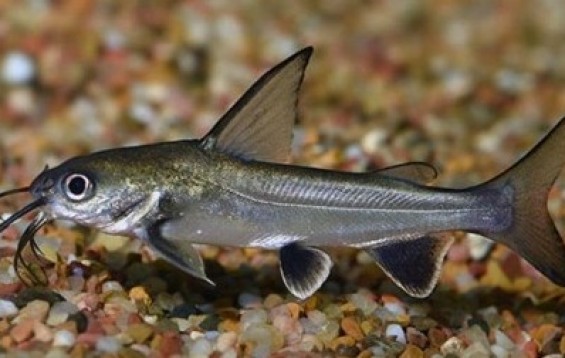
Are Jordans catfish Sensitive To Water Changes?
While Jordans catfish are celebrated for their adaptability, abrupt water changes can pose a significant threat to their well-being. Sudden shifts in water parameters, including temperature, pH, and hardness, can lead to stress and subsequent health complications. Therefore, a stable aquatic environment is paramount for the prosperity of these creatures.
Acclimatizing Jordans catfish to new water conditions should be handled with care. A gradual introduction is key to preserving their health, helping them adjust without unnecessary distress. They are also particularly sensitive to ammonia fluctuations, making regular tank maintenance and effective filtration a necessity to uphold water quality. Keeping a vigilant eye on stability is essential for the care of Jordans catfish, ensuring they remain healthy and vibrant within their aquatic domain.
Are Jordans catfish Sensitive To Ammonia?
Even moderate sensitivity to ammonia can become a significant concern for the health of Jordans catfish. Elevated ammonia levels in their aquatic environment can induce not only stress but also respiratory difficulties, which can be fatal in extreme scenarios. Their tanks must have well-regulated ammonia levels to prevent these potential adversities.
Ammonia toxicity primarily affects the gills, hindering the catfish’s ability to effectively extract oxygen from the water. Indicators such as lethargy, loss of appetite, and a preference for seclusion may signal that Jordans catfish are suffering from the detrimental effects of ammonia. Preventing ammonia build-up through regular water testing and dedicated maintenance is a necessary practice for keeping these fish healthy.
Are Jordans catfish Sensitive To Copper?
Copper sensitivity is another crucial factor to consider when caring for Jordans catfish. Even trace amounts of this metal can result in considerable health issues for the species. Exposure to copper can interfere with their metabolism and may lead to stress, breathing difficulties, and in severe cases, death.
Responsible aquarium management includes careful monitoring of copper levels in the tank water. It is advised to be cautious when using copper-based medications or introducing copper-containing substances, which are potentially harmful to Jordans catfish. Ensuring a copper-restricted environment is key to maintaining the vitality and longevity of these aquatic inhabitants.

